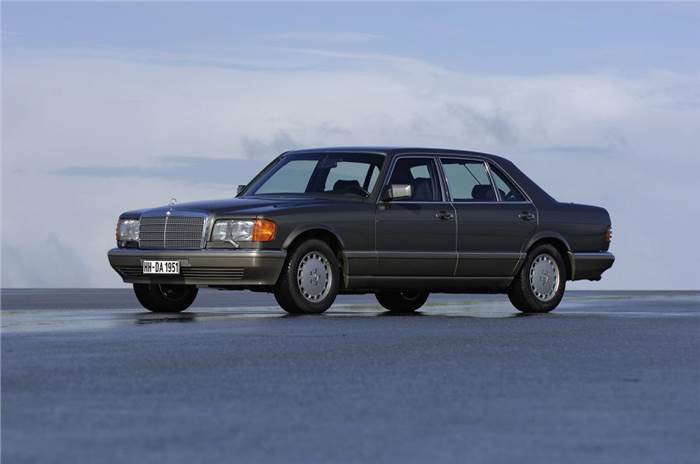The world of automotive design has lost one of its brightest stars. Bruno Sacco, the legendary designer who transformed Mercedes-Benz into a symbol of elegance and timeless sophistication, passed away on September 19, 2024, at the age of 90. Sacco was more than just a designer—he was an artist, a visionary, and an individual whose approach to car design was both revolutionary and lasting. As we say goodbye to the man behind some of the most iconic vehicles in history, we reflect on his remarkable journey and the indelible legacy he leaves behind.

A Journey That Began with Passion
Born on November 12, 1933, in Udine, Italy, Bruno Sacco grew up in a time when cars were more than just machines; they were symbols of progress, power, and artistry. Drawn to these intricacies, Sacco pursued mechanical engineering in Turin, but soon realized his true calling was in shaping the aesthetics of automobiles, not just their mechanics. His early work at Ghia and Pininfarina—renowned Italian design houses—introduced him to the world of form and function, where he began developing his distinctive approach to automotive design.
Sacco’s career truly took off when he joined Mercedes-Benz in 1958. Recommended by Karl Wilfert, the head of body development at Daimler-Benz, Sacco moved to the Sindelfingen plant, where he started as a second designer. Little did anyone know that this young designer would go on to redefine the face of one of the world’s most prestigious automotive brands.
A Legacy of Timeless Design
Bruno Sacco’s career at Mercedes-Benz spanned over 40 years, during which he rose to become head of styling from 1975 until his retirement in 1999. His approach to design was driven by a simple yet profound philosophy: “I am a Mercedes-Benz designer not because I think ‘l’art pour l’art’ should be my motto, but because I want the cars I am responsible for to sell successfully.” Sacco’s mission was clear—create cars that were not only visually stunning but also built to endure.
He introduced the concept of “horizontal homogeneity and vertical affinity” to Mercedes-Benz’s design language. For Sacco, all models, regardless of size or class, had to share a unified design ethos, and each new generation of cars should retain a sense of continuity with its predecessors. This approach ensured that a Mercedes-Benz was instantly recognizable, no matter the model or year. Sacco’s goal was not to follow trends but to create designs that would stand the test of time, and in doing so, he achieved something rare in the automotive world—timelessness.
Icons of His Craft
Some of Sacco’s most recognizable creations include:
- W126 S-Class (1979-1991): The epitome of luxury and innovation, the W126 S-Class became a benchmark for luxury sedans worldwide. Its understated elegance and advanced safety features were a perfect representation of Sacco’s vision.

- G-Class (1979-present): Originally designed as a rugged off-road vehicle, the G-Class has become an enduring symbol of both functionality and luxury. Sacco’s influence helped shape the car’s iconic boxy silhouette, which remains nearly unchanged to this day.

- W201 190 (1982-1993): The “Baby Benz,” Sacco’s compact executive car, brought the luxury and craftsmanship of Mercedes to a broader audience. Its influence is still felt today, with over 1.9 million units sold during its production.

- R129 SL (1989-2001): A masterpiece of design and engineering, the R129 SL roadster combined elegance with cutting-edge safety technology, making it one of the most beloved sports cars of its time.

- A-Class (1997-present): Despite Sacco’s initial reluctance, Mercedes-Benz entered the compact car market with the A-Class, expanding the brand’s appeal. The success of the A-Class, with 1.1 million units sold, proved that Sacco’s design principles could adapt to modern needs.

These vehicles weren’t just cars—they were statements of Sacco’s commitment to durability, practicality, and aesthetic grace.
Challenges and Triumphs
Like all great visionaries, Sacco faced challenges throughout his career. The introduction of the W140 S-Class in 1991, for instance, was met with mixed reviews. While many admired its cutting-edge technology, others criticized its size and complexity, calling it “over-engineered.” Sacco acknowledged that it might have been “too ambitious,” yet the W140 remains an iconic example of engineering excellence.
His resistance to the A-Class project also revealed his struggle to balance tradition with market demands. However, once Mercedes-Benz entered the compact car segment, Sacco’s designs for the A-Class became a significant commercial success, demonstrating his ability to adapt while maintaining his core design values.
Saying Goodbye to an Icon
On September 19, 2024, Bruno Sacco passed away, leaving a void in the world of automotive design. His work defined an era and continues to inspire future generations of designers. Mercedes-Benz, the brand that became synonymous with luxury and sophistication under his watch, owes much of its visual identity to his careful guidance and creative genius.
As we bid farewell to this towering figure, it’s impossible not to feel a sense of loss. Yet, Sacco’s legacy lives on in every Mercedes that rolls off the assembly line, carrying with it the spirit of his philosophy—cars that are not only beautiful when new but remain elegant, functional, and timeless throughout their lifespan.
A Legacy That Endures
Bruno Sacco’s passing marks the end of an era, but his influence will continue to resonate for years to come. His designs remain a testament to the power of simplicity, elegance, and coherence in a world often driven by fleeting trends. Sacco believed in the beauty of restraint, and his belief that “form follows function” has become a guiding principle in automotive design.
While Bruno Sacco may no longer be with us, his spirit endures in the countless cars he shaped and the principles he championed. He taught us that great design doesn’t need to shout—it only needs to endure. And endure it will, for as long as there are Mercedes-Benz vehicles on the road, Bruno Sacco’s legacy will live on.
Farewell, maestro. Your timeless vision will never fade.


